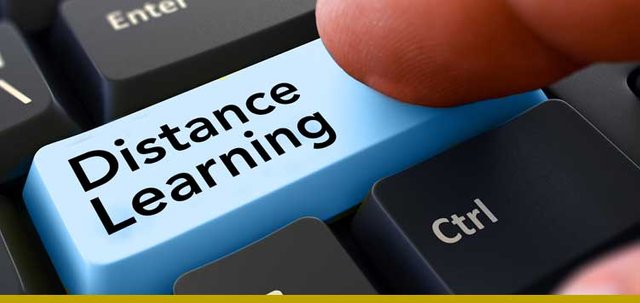Distance Learning, the ICTs and Blockchain
In 2008 Sir Ken Robinson explained that the education system for today's education was conceived and designed for another era; for the economy of the industrial revolution and the intellectual culture of enlightenment. Paraphrasing his words he said that true intelligence was the deductive reasoning and the knowledge of the classics; what we began to call academic ability. But what it achieved was separating people as academic or "non-academic", physical work and others academic studies. This model of education where the economic is separated from the intellectual has caused chaos in education (Robinson 2008). When this is added to the emergence of distance education for ICT, everything has become more specialized and a variety of concepts have emerged about distance education.
<iframe width="560" height="315" src="
I would like to share the concept of distance education of Dr. Omar Miratía. Rephrasing his words, he explains that distance education is an educational modality in which communication occurs in conditions of separation between teachers and students. The interaction, therefore, can occur in a synchronous or asynchronous way, through the traditional and new ICT’s (SEDUCV, 2007, p.5). "(Miratía, O, 2009)
Professor García Arieto in his YouTube video of “La Educación a Distancia”(Distance Education), explains that distance learning is a concept that is becoming bigger, covers more concepts and some authors prefer some concepts over others because of the nuances that each one has, different concepts have arisen by the inclusion of ICT. Education in some places where it was traditionally with physical attendance is already occurring in mixed, face-to-face and distance learning. I think this is achieved by incorporating the teacher into ICTs and the proper use of an instructional design that clarifies all necessary aspects for the correct use, including the three main errors of distance education that Garcia Arieto points out which are improvisation in planning, lack of coordination between human resources and materials, and inconsistency of assessments. The constant development of teachers in the use of ICT in their field becomes indispensable. The changes that ICT presents in education allow an autonomous learning that is not governed by the same factors as in face-to-face education and its detached standardization.
<iframe width="560" height="315" src="
It is clear that the problem raised by Robinson has a solution through the approaches to distance education explained by Garcia Arieto. Face to face education has also created temporary space problems that are eliminated in distance education. Good planning, resource use and evaluation would achieve a significant change in education. It can be argued that distance education obtains better results by its character of autonomous learning on the student side.
I leave you guys with a great question for your comments:
How can blockchain technology aid and improve distance education?
